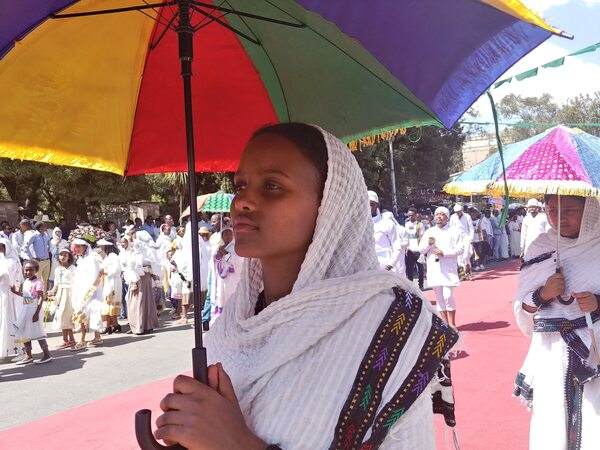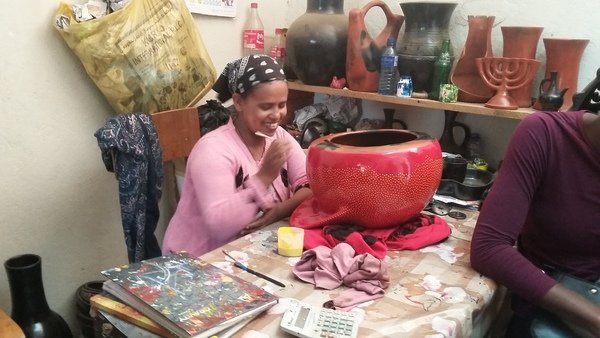
When we are faced with a new culture like that of Ethiopia. It can be overwhelming and sometimes we don’t know the right thing to do. Although we humans have a different culture, we shouldn’t forget that the social behavior and norms found in many societies are similar. All human beings share it among themselves.
Our human ancestors wandered the African continent for millions of years before migrating to other parts of the world some 120,000 years ago. Ethiopia has always believed it to be the cradle of humanity and culture because the country has discovered some of the oldest hominid fossils of our ancestors.
Ethiopia is also one of the oldest nations and has several ethnic and religious groups. This contributes to the country’s multiculturalism. One of the reasons for the cultural diversity are the different ecological regions of the country. The highlands are a cool temperate zone suitable for settlement and ideal for agricultural practice. The Low Land area is a hot region; The environment is difficult to live in. Lowland communities tend to raise animals. The harsh environment of the region is an important factor for cultural development. There are many languages, cuisines, art and styles of music that have sprung up among the scattered people of the Lower Land. This is also a place of different culture of clothing and body beautification. People just want to wear something to cover their waists and adorn their bodies with unique hairstyles, body paintings, scarifications. While in the highlands they prefer to wear a lot of traditional clothes to warm up, they braid their hair.
Religion also plays an important role in dressing up and interacting in Ethiopian culture (regardless of their living environment). Usually, traditional Christians and most Muslim women cover themselves in scarves.
Although Ethiopians have similar historical, physical and social characteristics, they are also very different. Today the urban culture and pop culture of Ethiopia are dominated by the culture and language of the Amharic ethnic group merged with Southern Ethiopia, the Rege and the American style. This is due to city life and the Amhara were popular ethnic groups in the country and the emperors of Ethiopia were descended mainly from these ethnic groups. This has a great advantage in expanding their culture and language.
How to eat in Ethiopia
Using the right hand is important in many cultures. It is regarded as holly. Use your right hand when eating with a local family and in front of older people. it is very inappropriate and disrespectful to eat with the left hand.
Greetings
The most common way to greet people is the right handshake. Selam is the most common word used in Ethiopia to say hello or hello. Other than handshake Friends and families Pump or tap shoulder to shoulder from right to left. Kissing both cheeks thrice is also as common among real adults as greeting someone who is missing. Bowing your head a little while saluting is considered very respectful and is a good manner.

How to dress
There is no strict dress code. In Addis Ababa and other big cities, some locals dressed in a more western way. They are comfortable walking with exposed thighs, shoulders, or abdomen. Dressing like this is not a good idea. You could attract a lot of attention, feel uncomfortable, and receive negative comments.

Generally, it is more appropriate to dress normal and modest. With covered legs and shoulders, especially in the northern and eastern part of Ethiopia. Women must cover their heads inside a church. When entering a church, remove your shoes and hat.
Be neutral in religion and politics
Ethiopians are tolerant, respectful, and patriotic. The country is also diverse with different ethnic groups and 98% of the people said that religion is very important in their life. This means that religion is a very sensitive subject. Even if you strike up a conversation with someone like your guide or driver. It is best not to comment on any religion, political or ethnic group.
Gun culture
Don’t be surprised if you have seen a tribal man in the middle of the road with the AK40 rifle. Ethiopians had a unique tradition of carrying traditional weapons such as shields and swords, which were used for various activities such as hunting, tribal warfare, dance, and traditional ceremonies. In modern times, gun cultures are found in Ethiopia, and behaviors, attitudes, and beliefs towards guns are part of this long-standing culture. Rifles are passed down from parent to child for self-protection and the community. The care of firearms by the civil population in the cities is almost nil, except for the police, however, in remote communities, it is very important in the fight and defense of the theft of cattle, the conflict over pasture and water .

Cultural Handy Crafts
Ethiopians, particularly men and women in the tribal area, adorn themselves with a variety of handcrafted items such as headdresses, earrings, anklets, rings, bracelets, necklaces, and traditional clothing. In villages, wearing or owning these materials is important and is influenced by a person’s social status, religious beliefs, cultural practices, or beautification.
To have the best memory of your trip, support the local economy and artisans by purchasing locally sourced handicrafts. Avoid African-style products imported from China mixed with local products. This is probably not how you want to remember your trip to Ethiopia.

Refrain from buying products that exploit heritage elements or abuse animals. It is illegal and can be punishable in front of a court.
